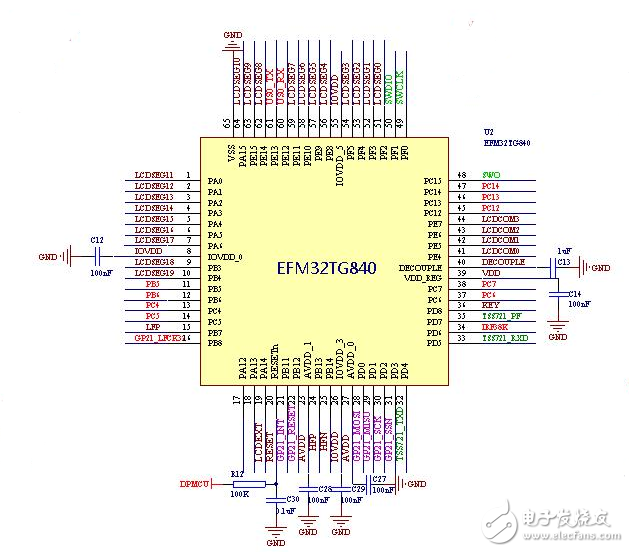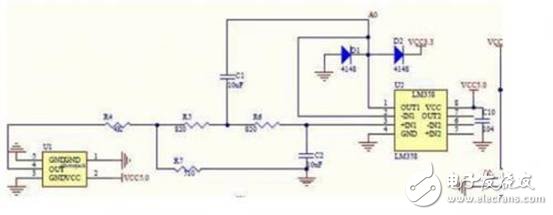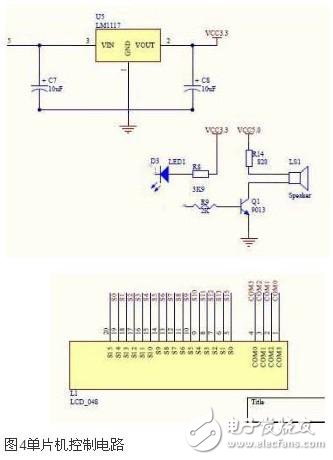Although the wearable market has not yet broken out, it is an indisputable fact that it will set off an explosive frenzy in the electronics industry in the future, and wearables will be one of the first applications to break through.
More medical design and hot technology you are interested in, high-level views, and new and interesting technology, engineer experience, all in September, "Smart Medical Special Edition"!
In view of this, the electronic enthusiast network specifically integrates the design circuit diagram for wearable medical treatment, from the aspects of MCU, sensor, wireless module, power supply, voice alarm system, analyze the precise design of wearable!
Precision Design MCU
Design of portable heart rate monitor based on EFM32TG840
In the field of consumer electronics, portable electronic products have become more and more popular among consumers due to their small size and light weight, and have become an indispensable part of people's lives. Based on this idea, we designed a portable heart rate meter, which can replace the traditional method of measuring with pulse stethoscope and so on. It is very convenient to use. The product mainly consists of three parts: signal acquisition, data processing, and LCD display and alarm circuits.

The input signal of the voltage follower, that is, the pulse sensor signal is input from the V+ terminal, and the feedback resistor is set to zero to form a non-inverting follower, which acts as a buffer to isolate the influence of the front and rear stages. The function of the heart sound pulse amplifier is to amplify the mV level heart sound signal to the V level for display and recording.
Due to the interference of external signals in practical applications, and considering the stability of the amplifier, the primary amplifier cannot achieve such a large gain, so the voltage amplifier generally consists of two stages. Among them, the front stage uses a negative feedback differential amplifier circuit to improve the common mode signal rejection ratio. The key to this part is how to suppress various noises and prevent noise from entering the downstream circuit. Therefore, in the system, the micro-power instrumentation amplifier LM358 based on the dual op amp circuit is used as the preamplifier of the heart sound pulse signal. In order to prevent the occurrence of nonlinear distortion so as to impair the common mode rejection ratio of the circuit, the amplification factor of the portion should not be too high, and the selection is about 1000 times.

The following sections mainly include the MCU control display circuit and the alarm for driving the buzzer. The specific circuit is shown in Figure 4.

Elecfans technical editor comment: This design realizes real-time measurement of heart rate signal through digital-analog hybrid circuit combined with single-chip control design, and can issue warning. The whole circuit tries to take into account various factors, make the line simple, reduce the electromagnetic field interference, make full use of software programming, make up for the lack of precision of the components, and make the standby time due to the introduction of the world's ultra-low power ARM-EFM32. The ultra-long, functional upgrade space is also very large, and other functions can be loaded based on the design, so that its function and structure are more perfect, and extended to the determination of other physiological states of the human body.
----------------
Focus on wearable medical design secrets, design strategies worthy of your time reading!

Phenolic Cotton Cloth Laminated Sheet is a laminated material made by hot pressing of cotton cloths impregnated with a thermosetting phenol-formaldehyde-based binder.
Due to the use of cotton cloths, the phenolic cotton cloth mixture has high compression strength and increased resilience, favorably lends itself to machining by drilling, cutting and forging. That is why it the phenolic epoxy resin cotton cloth laminated sheets are widely used to make parts loaded with reversed electrical and mechanical stresses or working under friction (bushings, cams, etc.).
The textolite or phenolic cotton cloth sheets are used as insulating material for work in transformer oil and in the air at normal relative humidity of the environment and at 50 Hz of frequency.
Long-term allowable working temperature: -65°C to +105°С.
Phenolic cloth laminated sheet is made of cotton cloth impregnated with phenol resin, baked and hot pressed. It has high mechanical properties, oil resistance and certain dielectric properties. The heat resistance level is E level.
Phenolic Cotton Cloth Laminated Sheet
Cotton Cloth Board,Hard Cotton Cloth Board,Phenolic Cotton Cloth Board,Phenolic Cotton Cloth Laminated Sheet
Yingkou Dongyuan Electrical Insulation Board Co.,Ltd , https://www.dy-insulation.com